Hey friends! I’m Akash, an early stage investor at Earlybird Venture Capital, partnering with founders across Europe at the earliest stages.
Software Synthesis is where I connect the dots on software and startup strategy - you can always reach me at akash@earlybird.com if we can work together.
Current subscribers: 4,450
As enterprises reallocate software budgets to AI, the markets have been telegraphing the existential threat this represents for many incumbent application software vendors.
Claims about the death of software are exaggerated, but business application software as we’ve known it for over two decades may be undergoing its most radical transformation yet. In this post-transformer age, data has ultimate gravity - the value of wrapping a human-friendly UI with a CRUD operation on top of a database will be nullified in a world of abundant agents.
reasoned about this possibility last week:The leading application vendors today have become systems of record that workflows are built around. A system of record is just a database. And the workflows will be carried out by agents and API calls.
This is why one belief I have is that the future of application software in a world of AI agents probably looks a whole lot more like database software…These worlds are merging (database and applications). At the end of the day, most software today is just a UI on top of a database. We need the UI for human consumption. But we don’t need it for AI agent consumption.
Let’s quickly recap how we got here.
Marc Andreessen’s classic 2011 essay about ‘software eating the world’ rightly presaged wholesale disruption of industries by cloud software vendors:
Over the next 10 years, the battles between incumbents and software-powered insurgents will be epic. Joseph Schumpeter, the economist who coined the term “creative destruction,” would be proud.
Cloud software penetration of IT spend outstripped growth in software, technology and world GDP growth to such an extent that in 2024 we find ourselves in a position where Salesforce may never return to double digit growth.
Though cloud software penetration has risen sharply, enterprise IT budgets are not going anywhere. Businesses have jobs to be done and outcomes they want to achieve - any collapse in software development costs/accessibility isn’t going to suddenly turn buyers into IT organisations overnight.
Additionally, as has been said ad nauseam, the automation of entire swathes of work unlocks services budgets that were previously out of reach.
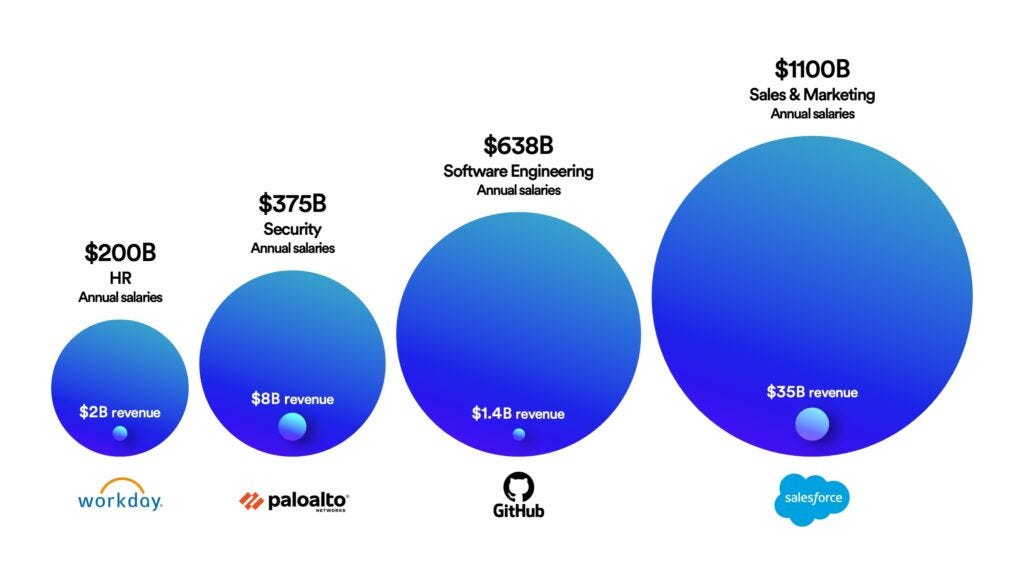
Given that we’re not TAM-constrained, the growth crunch in software is rather raising the perennial question of value accrual.
Integrating data and applications in the AI era
“While bulls might be willing to look through the disappointment given ‘it’s just a Q1,’ we believe these results raise more meaningful questions around the adoption curve and ultimate monetization of genAI for seat-based SaaS companies”
The new cohorts of AI-native software vendors will increasingly transmit units of value that are consumed on a usage basis, that much is clear (and not the focus of this post).
It’s definitely the early days of simple RAG applications in the enterprise, but if we look to where the puck is going then we can see a relatively unobscured future of asynchronous 24x7 workers increasing throughput of work (as we’ve discussed before, here and here).
All of the discussion about the UI/UX for AI-native application may not matter for large swathes of work that can be entirely delegated to agents that rely on system design patterns like tool use.
That’s why Databricks’ announcements this week were significant. Off the back of announcing $2.4bn run-rate revenue and 60% growth at such scale, they made a series of announcements centred around the capabilities unlocked by Mosaic. The most notable of these was the AI Agent framework:
Today, Databricks announces Mosaic AI Agent Framework, which makes it easy for developers to quickly and safely build high-quality RAG applications, using foundation models and their enterprise data.
“We believe that compound AI systems will be the best way to maximize the quality, reliability, and measurement of AI applications going forward, and may be one of the most important trends in AI in 2024,” says Matei Zaharia, Co-founder and CTO at Databricks.
“Databricks is uniquely positioned to capitalize on these trends with the investments we’re making to improve quality, augmenting the model with real-time data and agents and tools to give it new capabilities it has little knowledge of.”
Customer service, one of the LLM use cases demonstrating early traction, is fundamentally a RAG application, as are many other use cases of knowledge retrieval.
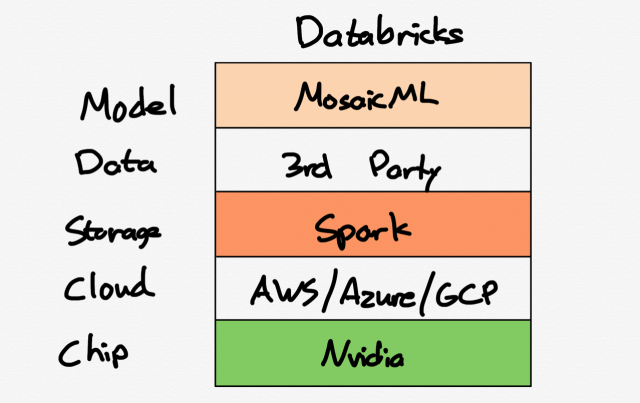
Databricks and Snowflake have the potential to offer a vertically integrated solution for enterprise AI adoption by helping unify a company’s data (structured, semi-structured, unstructured) and unlocking both data and business applications.
The data gravity protecting current systems of record will be obviated as companies collapse data silos and store all of their data (CRM, ERP, HCM, ITSM, etc.) in data lakehouses. The data will need to be structured/processed to be ready for agent consumption, but thereafter the incremental value of standalone business application software vendors may well be diminished.
Though a plausible future scenario, application software vendors will themselves look to consolidate adjacencies, e.g. Workday in HCM/ERP data, Salesforce in Sales and Marketing. Will they be able to match the AI app development capabilities of Databricks’ Mosaic and Snowflake’s Cortex offerings, though?
Even if brownfield markets remain slow to transition, the data platforms (and to some extent the hyperscalers) may well index themselves to the enterprises of tomorrow that allocate their IT spend from first principles without the burdens of data gravity:
To the extent Google wins in enterprise it may be by capturing the next generation of startups that are AI first and, by definition, data light; a new company has the freedom to base its decision on infrastructure and integration.
Charts of the week
GTM orgs can vary significantly based on the end market
Net Dollar Retention is the lowest it’s been for years
Curated Content
A conversation with NVIDIA’s Jensen Huang at Stripe Sessions
Michael Dell, Jensen Huang and Bill McDermott on New AI Factories
Building an AI-Native Company by Contrary Research
From Syntax to Semantics by Alessio Fanelli
Apple Intelligence is Right On Time by Ben Thompson
Quote of the week
‘I think it’s quite possible that the rate at which new economic value comes online is completely wrong in terms of the slope, there should be not just summers and springs, but winters and falls. Things getting as bleak as they were in 2000, I guess the reason I struggle with that analogy a little bit is one issue you had when the Internet bubble crashed is it was just going to take time for economic demands to come online. You couldn’t really accelerate the base rate of that no matter how many AOL CDs you handed out at Fry’s, whereas here you’re going to be really bottlenecked by the rate at which you can make model improvements, which I think you can control much more.’
Thank you for reading. If you liked it, share it with your friends, colleagues, and anyone that wants to get smarter on startup strategy. Subscribe below and find me on LinkedIn or Twitter.





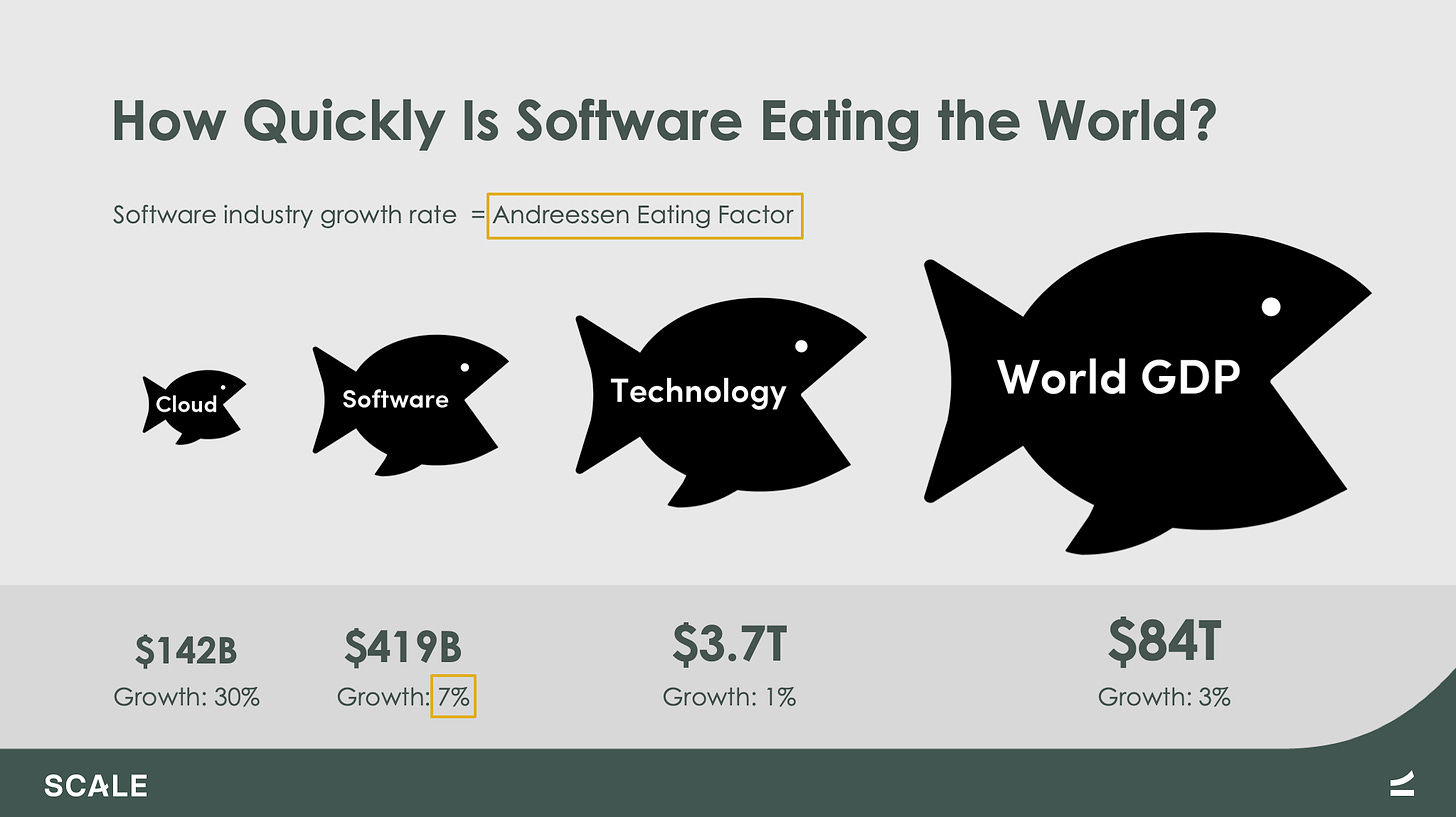
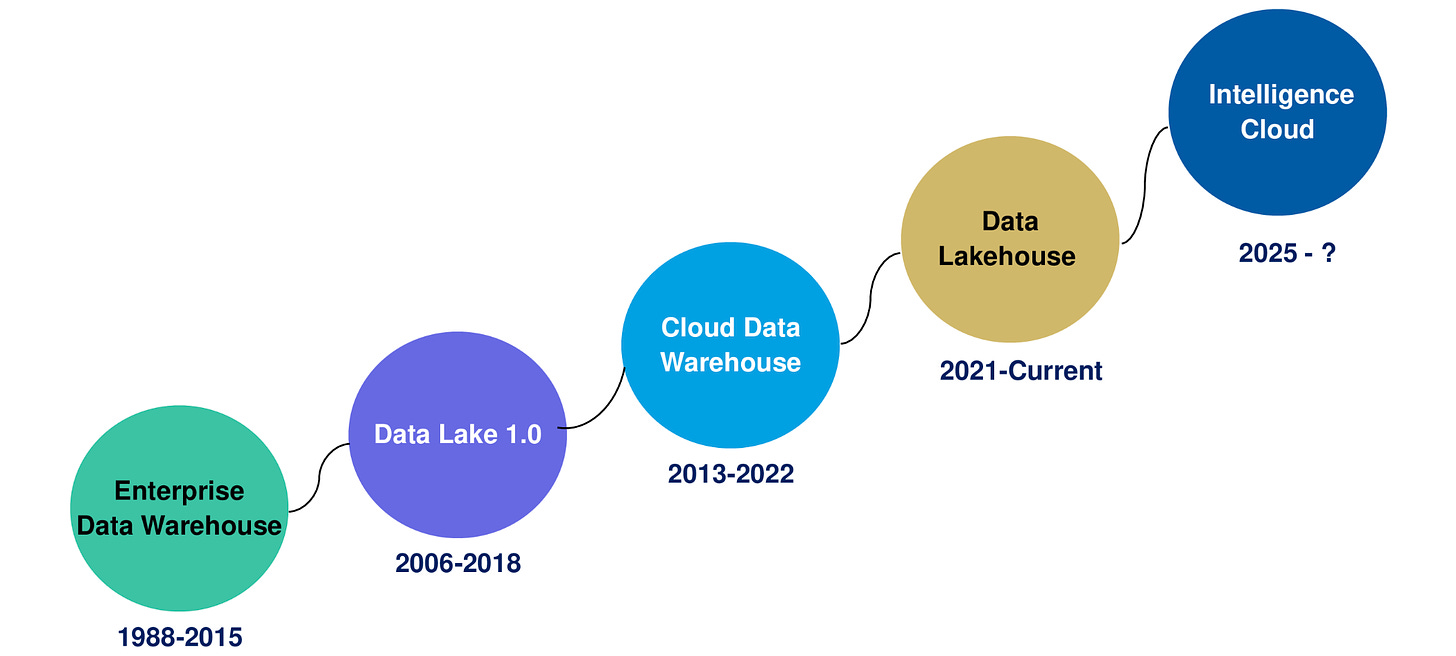

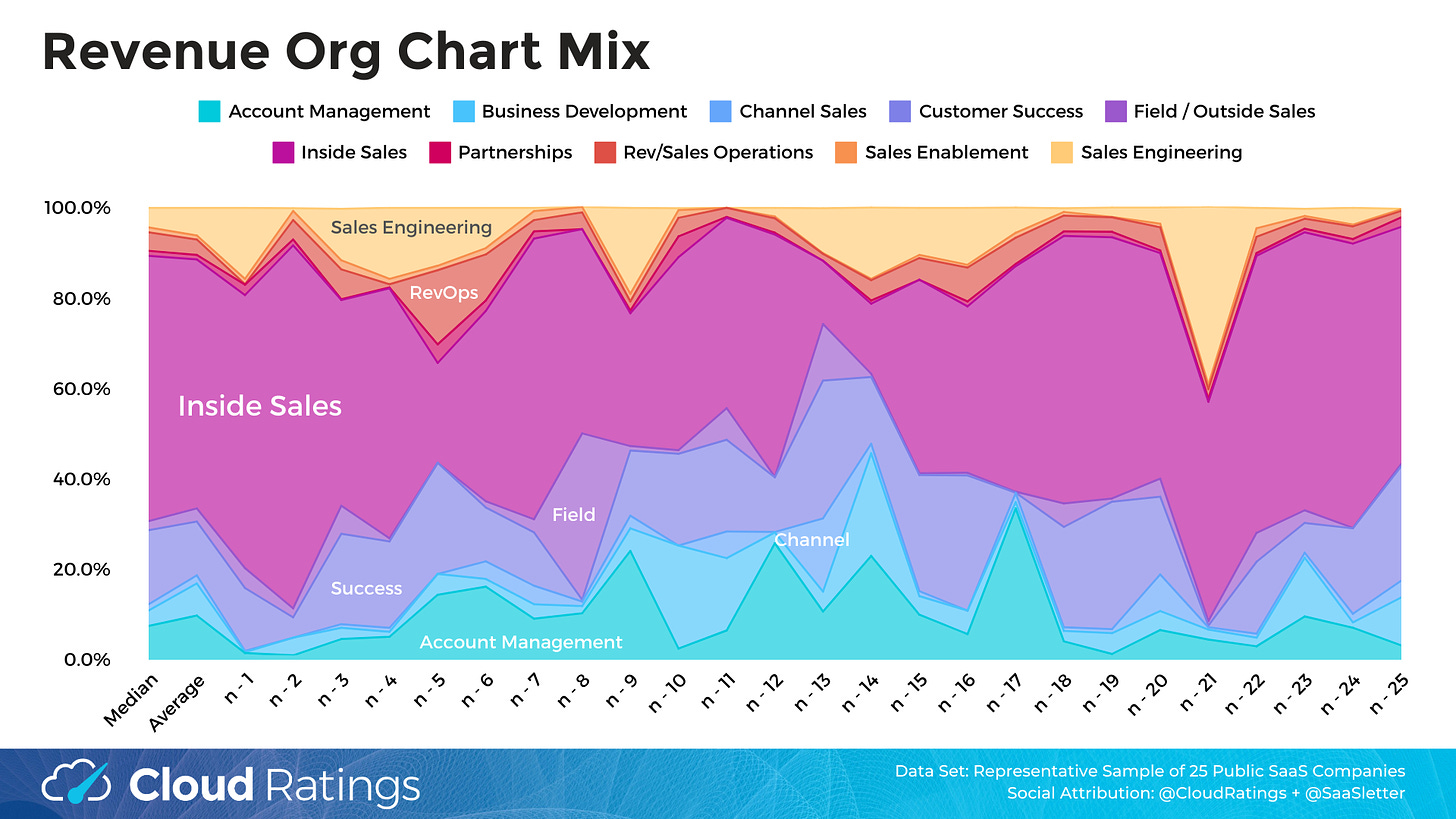
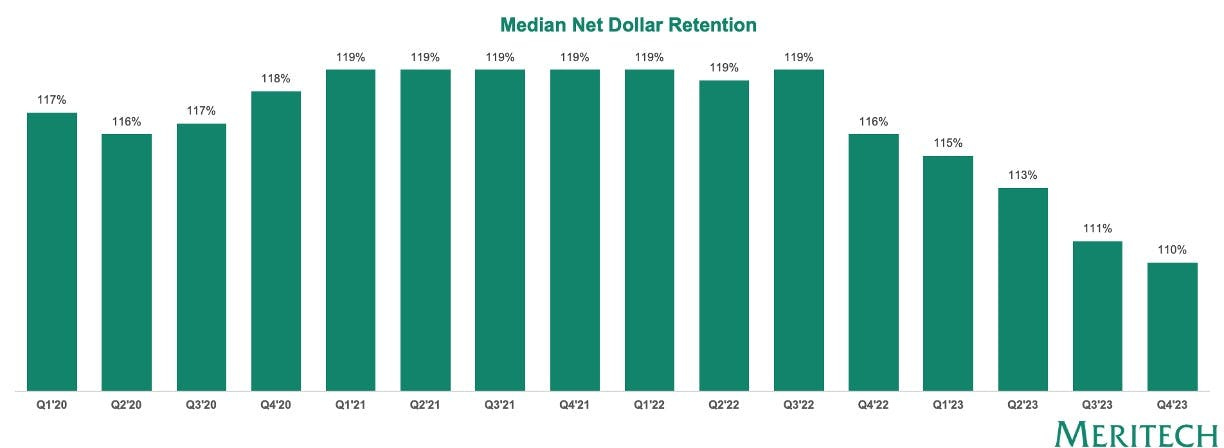
Akash, your vision of software evolving with abundant agents is insightful. I believe this future can be even more powerful with the incorporation of a unified namespace. This approach could serve as the backbone for integrating various technologies, enabling seamless data flow across different systems and applications. It ensures that every piece of data is accessible and usable in real-time across the enterprise, providing flexibility and scalability for companies of all sizes.
I recently wrote an article discussing how a unified namespace can be universally applied, focusing on a practical approach rather than conceptual or theoretical ideas. I think combining these concepts could lead to even more robust solutions. I’d love to hear your thoughts on how this might fit into your vision for future software architecture.
Since it doesn’t quite make sense to post the article in this context, I'll send it to you via email. Looking forward to your thoughts!
AI is an inflated bubble.
There are many service now with AI integration, and the output is not up to scratch. It's not good enough and it probably won't be for another 10 years. What we have now is hyperinflated expectations for something that was much better than we expected.
I for one will also be cancelling many things after realising how bad it is. Microsoft and Apple's embedding if AI means I move to Linux. I don't use canvas, copilot etc because it's surprisingly good and terrible at the same time. The former NSA guy added to the OpenAI board as well as Altmans seemingly unethical and devious nature, means I will stop chatgpt.
My AMMERSE application which was to use AI, is now going to do it entirely as an optionql extension, rather than embedded into the core. Privacy first means my app will not go into the cloud and will be encrypted with users key by default. Apps need to still be marketable and saleable by itself, with AI moniker.
If we keep perpetuating this bumpy road as smooth and with a great view, we are going to have a very unhappy time of it as the next few years unravel.
There are already signs of low standard code going out, more than when SO code was being used. This is a bad day for coding and won't come right until iterations of codegen tools become good enough.
The metaverse, AI, Blockchain are all being led by fool tech oriented examples with no real problems solves.